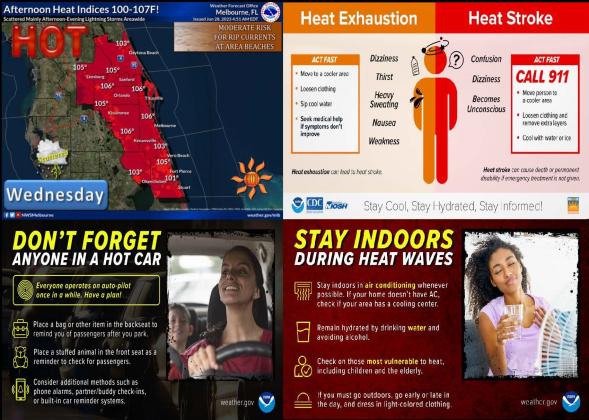This 4th of July holiday weekend we saw not only record travel but recordbreaking heat all across Florida and the South, with heat indexes reaching 110+ degrees. Knowing summer has just begun; keep reading to know how to recognize symptoms of heat illness if you are working outside, as well as how to administer first-aid before symptoms become urgent.
One of the best tips is knowing the difference between heat stroke and heat exhaustion. First let us define heat stroke. It is when the body is so overheated it can no longer self-regulate temperature. This is when sweating has not been effective, therefore not allowing the body to cool down. Body temperatures can reach to 106 degrees and higher if not treated within the first 10 minutes of occurrence. There are long-term health effects of heat stroke including long-term disability or death, very similar to the side effects of a stroke. People most affected are those who work outside or exercise in heat, but anyone can experience heat stroke if they are unprepared.
The main symptoms, paired with a very high body temperature, are confusion, slurred speech, unconsciousness or fainting, dry, hot skin, or excessive sweating, and seizures.
To treat this immediately, get somewhere cool or shaded quickly, wet skin with cool water and wet cloths applied to the skin. Call emergency services and stay with the person until help arrives.
Heat Exhaustion is the body responding to dehydration. This means an extreme loss of water and salt through lots of sweating. People most affected are those who are elderly, with high blood pressure, diabetes, and those working in hot environments like greenhouses and nurseries.
The main symptoms are a headache, nausea, dizziness, weakness, irritability, excessive thirst, heavy sweating, a high body temperature and decrease or no urination. Like treating heat stroke, it is important to get the person into a wellventilated and cool area and cool the person down with water, and remove clothing like shoes and socks.
Knowing the symptoms and how to treat heat stroke and heat exhaustion can be life or death for those experiencing it. The first aid is very similar to each other, which is useful.
The best treatment is prevention. If you find yourself working in the heat, proper hydration starts the night before. Remind workers to take all their breaks in shaded or cooled areas, provide water and sport drinks that contain electrolytes. Have a plan in place in case of a heat emergency.
For more information on this or any other related horticulture topic, contact Christine Jackson at UF/ IFAS Extension in Osceola County at 321-697-3000 or email at cjackson8 @ufl.edu.



